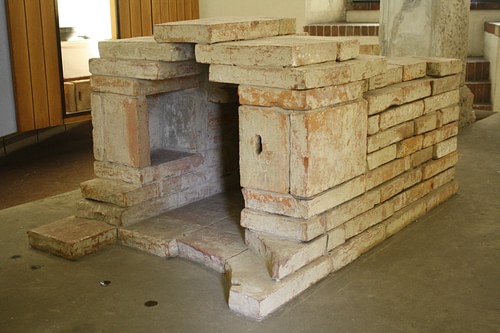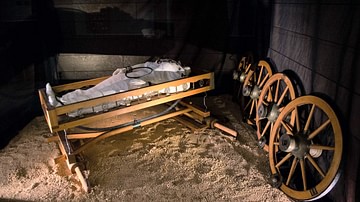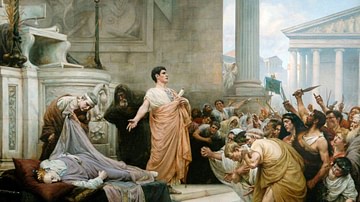The Roman funeral was a rite of passage that signified the transition between the states of life and death. It was very important to conduct the proper ceremonies and burial in order to avoid having a malicious spirit rising from the underworld. While no direct description of Roman funerary practices has been passed down, numerous ancient sources exist that provide accounts of ancient funerals. Generally, there were five parts to a Roman funeral: A procession, cremation and burial, eulogy, feast, and commemoration.
Procession
The funeral procession was marked by the movement of bodies, both living and dead, and the loud noise that it generated. The more wealthy and famous the deceased was in life, the flashier the funeral procession would be with mimes and musicians. For the poor, perhaps only a few flute players would play music at the procession.
Professional mourners formed a large part of the procession. These were women who were not members of the deceased's family, and had to be paid to participate. According to accounts of funerals, they would wail loudly and literally rip out their hair and scratch their faces in mourning. A large number of professional mourners signified that the deceased was a wealthy and powerful individual.
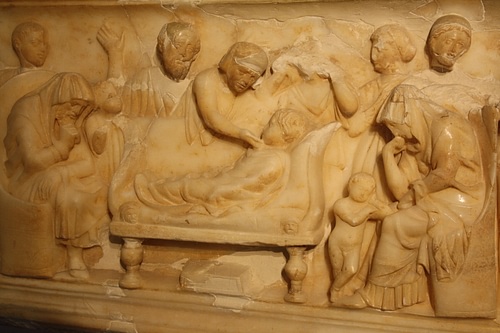
Freedmen, or clients of the deceased, also participated in the procession as a way of showing respect to their patron. Actors with imagines (ancestral masks) formed the next part of the procession. These actors would dress up as the deceased's ancestors and reproduce their personas. Ancestor worship was absolutely central to the Romans' beliefs about death and the afterlife. It was only after the actors dressed up as ancestors had passed that the body of the deceased was transported. The corpse was carried in a bier (a bed-like tray). The family of the deceased followed, marking the end of what was in many ways a much bigger procession than what would be found in a wedding.
Cremation & Burial
In the event of cremation, the body was taken to the necropolis (“city of the dead”) and put upon a funeral pyre. It was then burned, and the ashes and remaining fragments of bones and teeth were interned in a funerary urn. It was believed that until the body was interred, the “shade” (spirit) had not crossed the River Styx yet (the river that takes one from the World of the Living to the World of the Dead). Thus, there was a sense that the psychic impression of the deceased still lingered around friends and family, and the spirit would become angered if anything negative was said about it.
While cremation was the more common method from the formation of Rome to the mid-2nd century AD, inhumation (or burial) eventually took over as the preferred method. The body would be placed inside a coffin, called a sarcophagus, which was often massive and richly decorated. The body was not buried with any possessions. This was a very old practice throughout the Mediterranean, but one that was hardly ever used in Rome, especially when cremation was the most common method.
In Roman Egypt, there was an incredibly lifelike painting of the deceased attached to the front of the sarcophagus. Romans placed a lot of emphasis on knowing what the dead person looked like. As a result, these paintings were so lifelike that they resembled modern-day photographs. This level of technical competency in representing human faces was not achieved again elsewhere for at least another 600 or 700 years.
Eulogy
If the deceased was an important member of society or if he/she made a strong impression on his/her family, the family would offer a eulogy at the funeral. Many examples of eulogies that were delivered at Roman funerals have survived to the present-day.
FEAST
No funeral was complete unless there was a ritual feast at the end of it. The funeral was the final marker that told the deceased that he/she could continue on to the underworld and the family would be able to move forward.
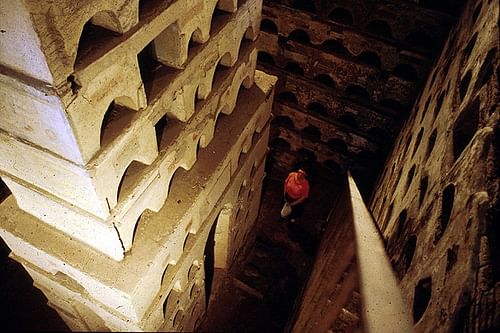
Commemoration
Once the body was buried or cremated, the deceased still had to be remembered. The Roman state set apart certain days each year to remember loved ones, including the Parentalia, held from February 13 to 21, to honor the family's ancestors. Individual families had personal days for commemorating the deceased, as well.
It was believed that if the deceased's family gathered around his/her tomb and made an offering, this would activate and placate the “shade” (in other words, the “shade” or spirit might remember some details about its life, rather than continuing to float around the underworld with no memory of its existence).
Death of an Emperor
After the death of an Emperor, he would be buried inside the city. This was an honor reserved for only the most exceptional and illustrious people; most Romans had to be buried outside of the city.
It was also believed that Emperors did not become shades (spirits) like others did; rather, they became Gods through a process known as apotheosis. As such, the Emperor's commemoration was much more impressive and more expensive monuments were erected. Trajan's Column, under which the Optimus Princeps' ashes were buried, is one of the most well-known Roman monuments.
